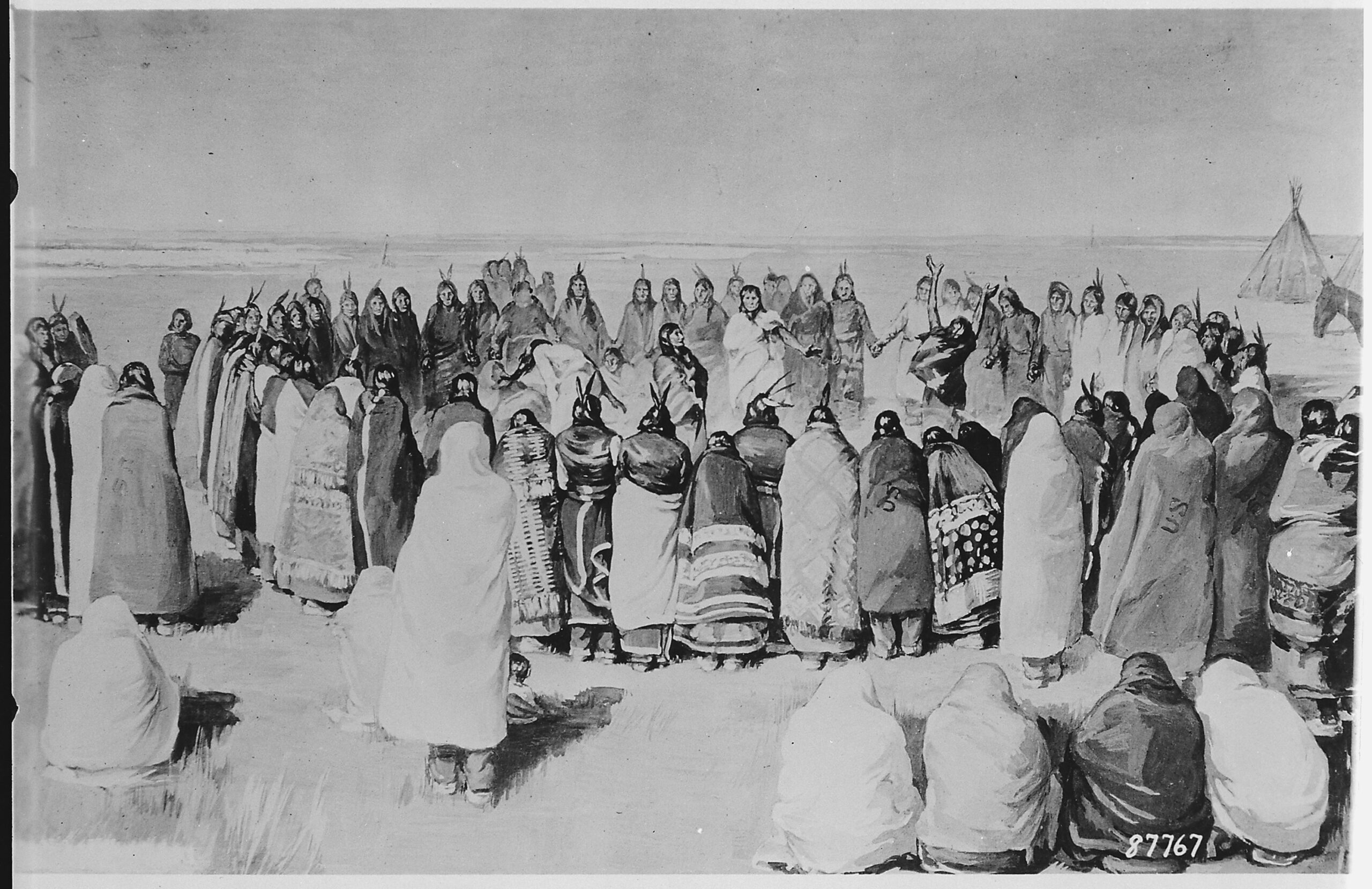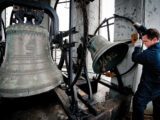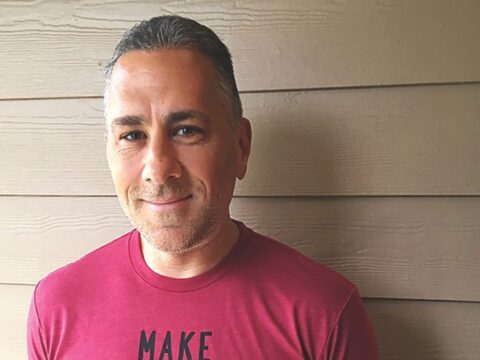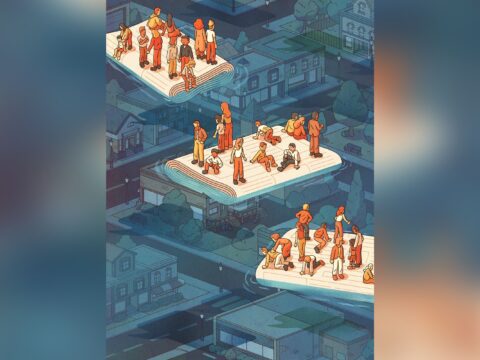The story goes that during a solar eclipse on Jan. 1, 1889, Wovoka, the Paiute mystic from Smith Valley, Nev., had a dream where he was taken up to heaven. There, he met an Indigenous Christ and saw the new heaven and new earth promised in the Book of Revelation. In this vision, the dead would rise and the land would heal of wounds inflicted by newcomers. All one needed to do was live in peace, work hard, go to church and dance.
Wovoka’s prophecy led to the Ghost Dance movement, which exploded across the Rocky Mountains and Great Plains in the years that followed. On reservations, groups danced all day in a circle around a tree symbol singing the songs gifted to Wovoka. Abstaining from food and water, many fell down and saw their dead relatives — and the world to come.
You may unsubscribe from any of our newsletters at any time.
“The Ghost Dance faith is the faith of many Indigenous Christians today, but we shouldn’t get confused with the western end-times scenarios of destruction and annihilation,” says Mi’kmaq theologian Terry LeBlanc.
Though I am not Indigenous, the Ghost Dance spoke to me about the “end times” with an immediacy I didn’t find in my Christian church circles. For Ghost Dancers, Christ’s resurrection was real and transformed all of Creation.
The Indigenous Christ visited his children through visions. The most famous recipient of these visions was Nicholas Black Elk, the Lakota holy man who later became a candidate for sainthood in the Roman Catholic Church. While dancing in 1890, Black Elk flew over the Promised Land and saw a man with an eagle feather in his long hair, with pierced feet and hands, surrounded by light. “My life is such that all earthly beings that grow belong to me,” the man told Black Elk. “My father has said this. You must say this.”
The Lakota called this figure Waníkiya: “He Who Makes Live.”
Colonial authorities, however, saw the resurrected Indigenous Christ and his Ghost Dance followers as rebels. Hysteria culminated in military buildup and tragedy: on Dec. 29, 1890, the United States Army massacred more than 250 Lakota near Wounded Knee Creek, S.D.
More on Broadview:
- Residential school survivor documents ‘spiritual journey’ — and the photos are powerful
- Indigenous mural changes the narrative in Toronto church
- How Vancouver’s First United centres Indigenous healing
Still, the Indigenous Christ lived on. In fact, even before Wounded Knee, large numbers of Ghost Dancers entered “mainstream” denominations. Followers entered churches, too. Black Elk, for instance, became a prominent Catholic lay leader at St. Agnes in Manderson, S.D. In July 1909, he wrote a letter in the Lakota Catholic newspaper, urging, “We all suffer in this land. But let me tell you, God has a special place for us when our time has come.”
“The new heaven and the new earth should be understood as the closing of the circle; the tree of life in Genesis 2, once again appearing, now as the tree of continued life in Revelation 22,” LeBlanc explains. “This cyclical understanding lies at the heart of all Indigenous North American conceptions, and is clearly celebrated in the Ghost Dance, a dance of renewal and restoration.”
***
Damian Costello is the director of post-graduate studies at NAIITS: An Indigenous Learning Community. He lives in Montpelier, Vt.
This story first appeared in Broadview’s July/August 2022 issue with the title “Waníkiya lives on.”















Why are there so many things wrong with this article?
Interesting that it is now an “indigenous christ”, but mercy on us all if it was a “white Jesus” he saw.
The last book in the Bible is Revelation (singular). “The Revelation of Jesus Christ, which God gave unto him, to shew unto his servants things which must shortly come to pass; and he sent and signified it by his angel unto his servant John…” (Revelation 1:1)
This “so-called” religion is works based and not faith based as Christianity is. “Living in peace, working hard, going to church and dancing” does not a Christian make.
Wovoka’s vision is to have the “natives” live in peace, but demands the removal of the “white man” from America. This is not the “Christian” view of peace. (Apparently, and fortunately for the white man, not enough of the “indigenous” are participating in the Ghost Dance)
Perhaps Wovoka is a false prophet instead.
Finally, “animism” (which the Ghost Dance relies on) is a source of idolatry, and uses “works”, not faith, to appease God or other gods. Christianity is based on what God has done for us, not what we can do for God.